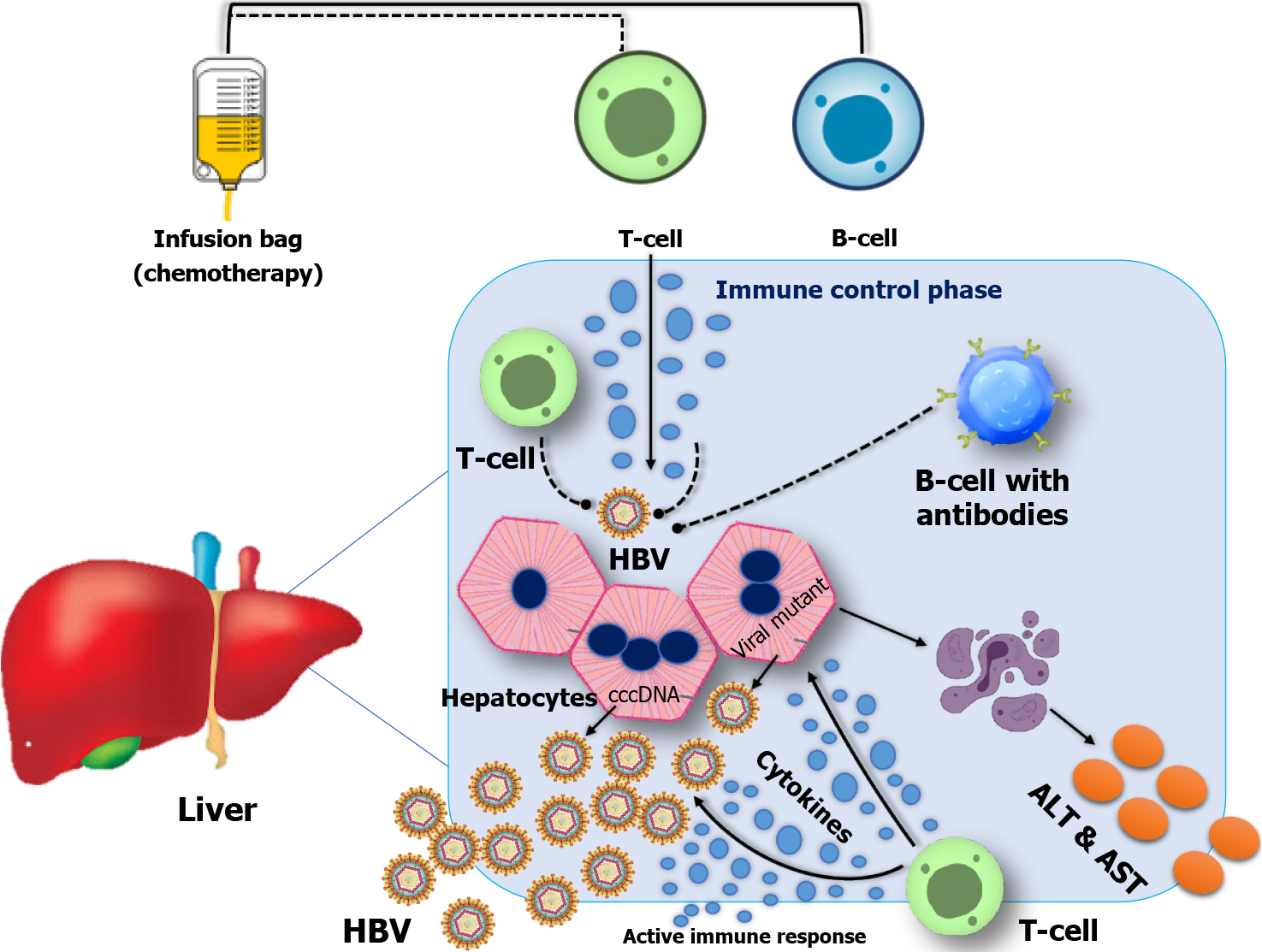Copyright
©The Author(s) 2024.
World J Gastroenterol. Mar 14, 2024; 30(10): 1295-1312
Published online Mar 14, 2024. doi: 10.3748/wjg.v30.i10.1295
Published online Mar 14, 2024. doi: 10.3748/wjg.v30.i10.1295
Figure 1 Reactivation mechanism of hepatitis B virus.
Immune control phase: B cells produce antibodies against hepatitis B virus (HBV) and prevent the transmission of HBV infection among hepatocytes; HBV covalently closed circular DNA is persistent in hepatocytes; HBV-specific T-cells limit viral replication via both cytopathic effects and non-cytopathic cytokine pathways. Immunological suppression phase: HBV DNA replicates again due to treatment-induced loss of immunological control; T-cells and B-cells are suppressed or destroyed by immunosuppressive therapies. HBV mutations cause immunological escape from T cells specific to HBV, and HBV DNA replicates again. When HBV DNA actively amplifies in vivo, HBV reactivation takes place. T-cells, the immune system’s reconstruction, and the active immunological phase target HBV-DNA and infected hepatocytes. The damaged hepatocytes release aspartate aminotransferase and alanine aminotransferase. cccDNA: Covalently closed circular DNA; HBV: Hepatitis B virus; ALT: Alanine aminotransferase; AST: Aspartate aminotransferase.
- Citation: Ma H, Yan QZ, Ma JR, Li DF, Yang JL. Overview of the immunological mechanisms in hepatitis B virus reactivation: Implications for disease progression and management strategies. World J Gastroenterol 2024; 30(10): 1295-1312
- URL: https://www.wjgnet.com/1007-9327/full/v30/i10/1295.htm
- DOI: https://dx.doi.org/10.3748/wjg.v30.i10.1295









